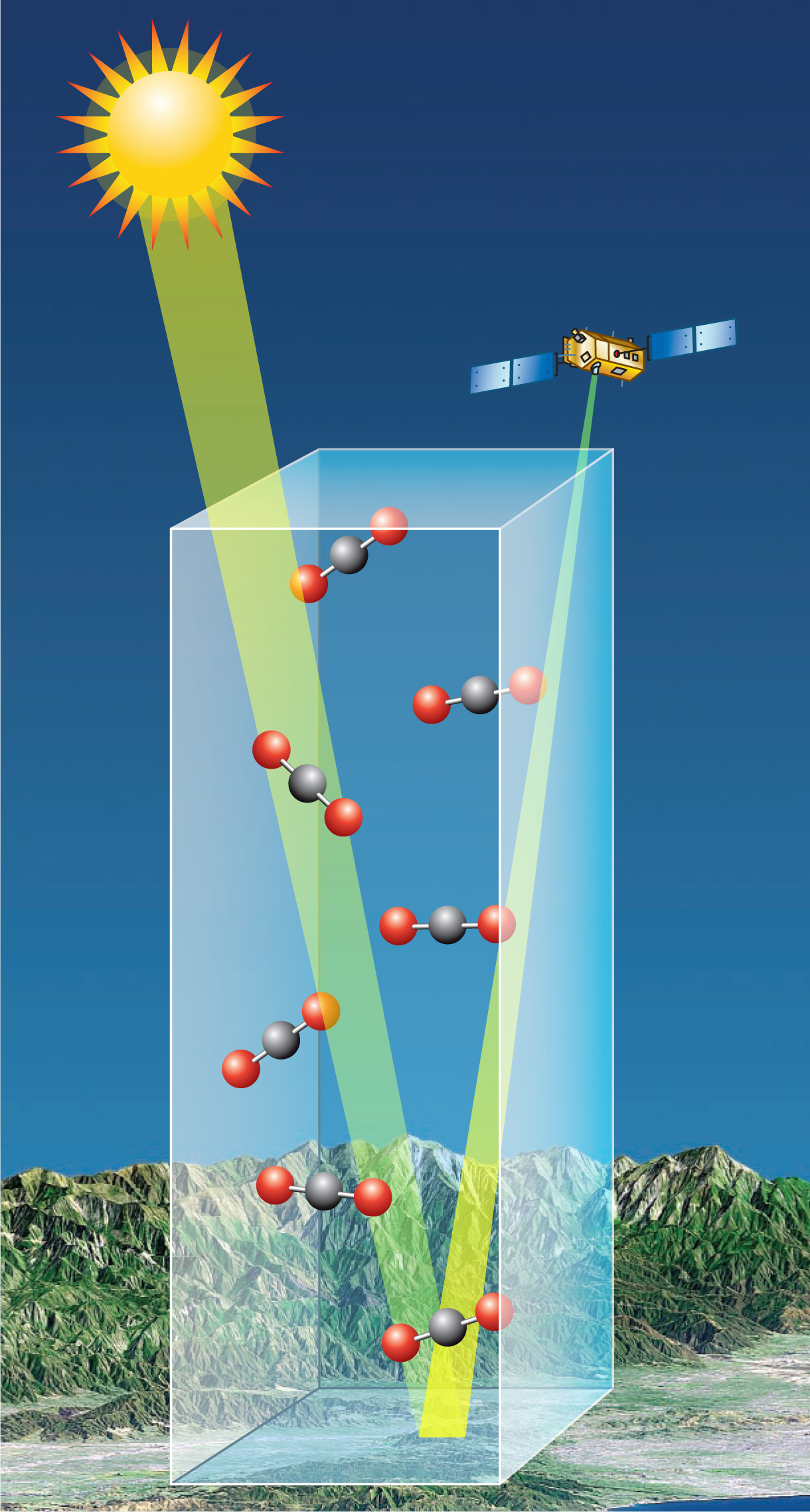Also discussed here: CO2 Monitoring Could Be “Space-Based” in Future (Bobby Magill, Climate Central, May 29, 2014)
And here: Multiscale observations of CO2, 13CO2, and pollutants at Four Corners for emission verification and attribution (6 page pdf, Rodica Lindenmaier, Manvendra K. Dubey, Bradley G. Henderson, Zachary T. Butterfield, Jay R. Herman, Thom Rahn and Sang-Hyun Lee,Proceedings of the National Academy of Sciences (PNAS), May 19, 2014)
And here: The President’s Climate Action Plan (White House, USA, Jun. 2013)
And here: Carbon Pollution Emission Guidelines for Existing Stationary Sources: Electric Utility Generating Units (645 page pdf, Environmental Protection Agency, USA, Jun. 2, 2014)
Today we review progress toward monitoring CO2 for the entire earth from a space-based platform, an approach that began in 2001 using the SCIAMACHY imaging spectrometer on the ENVISAT European satellite. In developed countries such as the USA, China or Canada, the main sources of CO2are either large coal or natural gas-burning plants or the emissions from heating/cooling building and vehicle emissions in urban areas which collectively contribute 80% of each countries emissions. Monitoring these emissions from the point sources is a complicated and time consuming task.
Recent research indicated that space based estimates of the CO2 found in columns extended to the earth’s surface compare well with ground based measurements. Plans to launch an improved sensor, the Orbiting Carbon Observatory (OCO) on July 1, 2014, combined with the commitment by the United States to reduce CO2 emissions from coal plants and other point sources and the need to monitor emissions globally validates the requirement for better space based estimates which are more efficiently collected and probably more accurate than the accumulated ground-based estimates.

Key Quotes:
“There is a pressing need to verify air pollutant and greenhouse gas emissions from= anthropogenic fossil energy sources to enforce current and future regulations. We demonstrate the feasibility of using simultaneous remote sensing observations of column abundances of CO2, CO, and NO2 to inform and verify emission inventories.”
“Under the Clean Air Act, in the United States these emissions are considered a threat to public health and welfare and are regulated by the Environmental Protection Agency (EPA).”
“Nationwide, by 2030, this rule would achieve CO2 emission reductions from the power sector of approximately 30 percent from CO2 emission levels in 2005…the significant reductions in the harmful carbon pollution and in other air pollution, to which this rule would lead, would result in net climate and health benefits of $48 billion to $82 billion.”
“current reporting in non-US countries is based on bottom–up estimates that use the type of fuel burned, power plant thermal efficiency, and CO2 conversion factors, rather than direct measurements of CO2 emissions.”
“Our high-frequency and precision ground based remote-sensing results provide the performance metric and sampling strategy for satellite-based measurements, permitting a global emission monitoring system…Our findings offer promise for future satellite-based monitoring approaches that simultaneously measure column CO2 and NO2 and determine emission factors from space.”
“To fully exploit this capability, we need to acquire measurements like this at high spatial resolution over the entire globe… One way to do this (is) to collect remote sensing observations from sensors deployed on space-based platforms. We have started down this road and we are making good progress.”
“coal accounts for 70 percent of energy used in China today, primarily for electricity production, and its coal use is increasing…Chinese provincial and national CO2 emissions do not agree … There is a large gap between the two. We need to know which is right for accurate accounting and future targets.”
“The Orbiting Carbon Observatory (OCO) was a NASA Earth System Science Pathfinder Project (ESSP) mission designed to make precise, time-dependent global measurements of atmospheric carbon dioxide (CO2) from an Earth orbiting satellite.”
“OCO-2's primary science objective is still to substantially increase our understanding of how carbon dioxide sources and sinks are geographically distributed on regional scales and how their efficiency changes over time.”








No comments:
Post a Comment